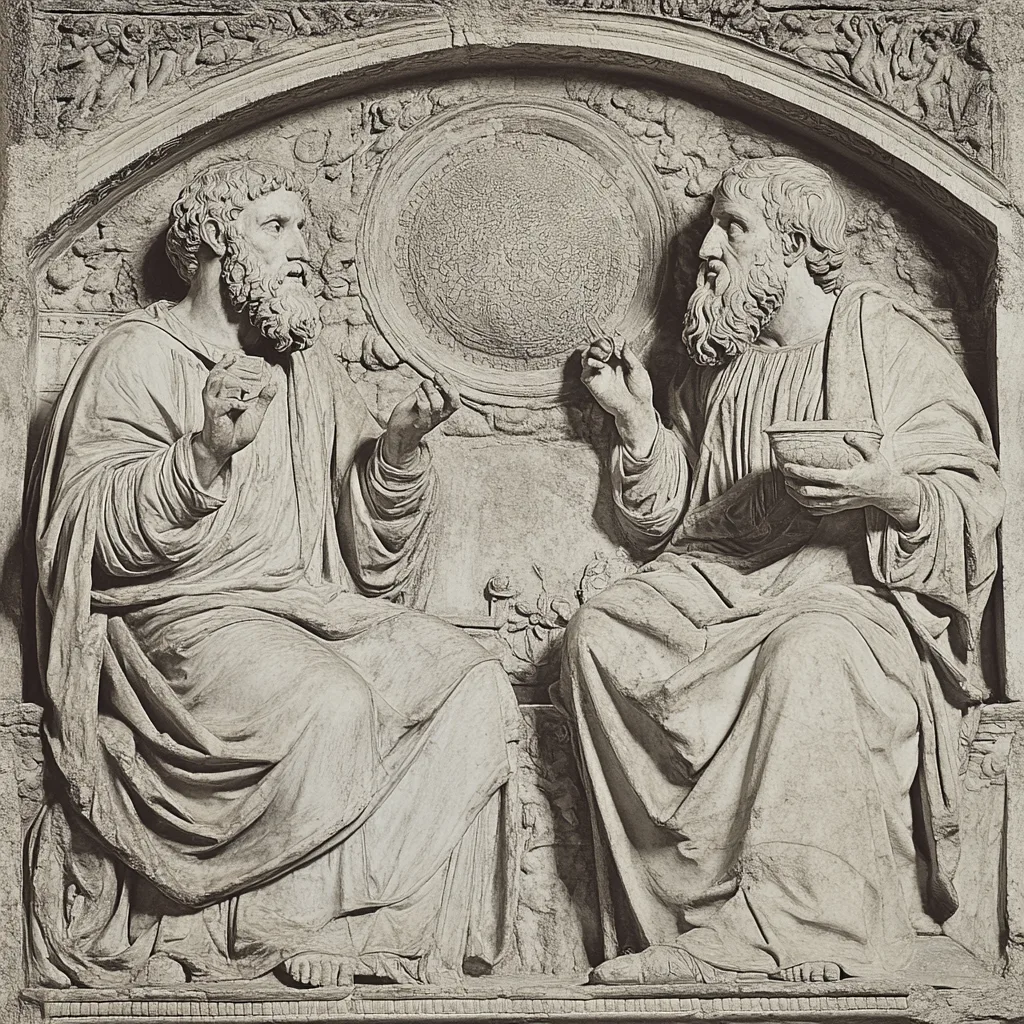This is continued from part 1, part 2, and part 3.
Purchase a copy of “On Original Sin, Vol. 1” here! (affiliate link)
I am writing this little series to consider how Vermigli’s view of original sin relates to contemporary issues of same-sex attraction in the theology of the Church. In the first post, I compared Vermigli’s anthropology, or view of human composition, with contemporary views. In the second post, I surveyed Vermigli’s view of original sin in general. In the last post, I looked at Vermigli’s view of the pervasiveness of original sin, and showed that it is essentially in line with the Westminster Confession of Faith on “total depravity”. In this post, I want to look at Vermigli’s view of how original sin is transmitted, or given, from Adam to his descendants. I also want to consider Vermigli’s view on how original sin indwells a Christian. In all of this, I am taking my time. You might be wondering what these posts have to do with SSA, but I hope that as I flesh out Vermigli’s particular views of these issues, you will see how they help us think through our contemporary categories and issues related to SSA.
The Transmission of Original Sin & “Indwelling” Sin
The Way Original Sin is Transmitted

In Vermigli’s analysis of anthropology and original sin, when God removed His grace from Adam and Eve, the affections (impulses) within their lower souls were corrupted and set against God. That is, in itself, the origins of concupiscence, also called original sin. Because of this corruption of the affections, the mind, which pervades the lower soul and upper soul, was twisted against seeking its proper end, and the entire person was therefore corrupted by original sin.
This is true in the first man, Adam, but what of his children? How is this corrupted nature transferred to Adam’s progeny; or is it transferred? Vermigli points out that there is a logical issue with his creationist position on the soul. He says, “If we establish that souls are created each and every day, and are created in such a way that there is no pre-existing seminal structure [seeds with the “code” for everything] in the bodies, then God…daily continues to create souls from nothing” (p. 93). The question is–how can the soul be “corrupted” if God creates it afresh in each human?
Original Sin Transmitted Via the Crasser Part of the Soul
Vermigli’s answer to the problem is that the soul and body have an effect on one another. According to Vermigli, the lower soul, which includes the animalistic affections, may be propagated by physical means. If you’re confused by that, then go back to my first post on Vermigli’s view of anthropology, where I mention that he believes the crasser parts of the soul may be passed on by physical means. Since the lower soul may be propagated by physical means, we inherit Adam’s lower-soul-pattern. Just as a plant inherits genetic properties from its parents that incline it towards one type of color or form, so too, humans inherit the affective dispositions or patterns of their parents.
In addition to the affections, the mind also extends into the lower, more easily susceptible part of the soul. The mind, then interacts with the corrupted and weak body. Vermigli says, “The first parents had original righteousness. This not only was situated in the mind, but also in the body and limbs. Therefore, by generating, they were able to transfer the lack of this righteousness to their children, since it adhered in the body and the flesh” (p. 79). This might be confusing, but Vermigli backs up, and then argues that not only do bodily properties pass from parents to children, but also “the properties of the mind“. He says, “Often, we see angry children born from angry parents, and sad from sad. Nor does it relate when they say that a grammarian is not born of a grammarian…Those are skills that are gained by learning…they are not inclinations that are innate to people…We are chiefly dealing with those inclinations here that are starting-points and first principles of action” (p. 82-83). Even the patterns of the mind may then be passed down from parents to children in that they are “inclinations” that dwell within the lower part of the soul, as they are corrupted by the body.
Because these affections are bodily (and yet soulish), and the mind may extend into the affective part of the soul, Vermigli actually summarizes this as “the impurity of the fallen body”. He states that the impurity of the fallen body as well as its own weakness are the “two heads” from which “stems the corruption and depravity of the whole nature“.
The Crasser Part of the Soul Corrupts the Nobler Part of the Soul
But how does this corruption of the lower soul affect the rest of the soul? How does it mess up the part of the soul that is specially created and endowed by God at the moment of conception? Vermigli argues, “the soul is not created with sin, but contracts it immediately when it makes contact with the body that is descended from Adam… [because] it lacks the grace and the strength with which the soul of the first human was endowed, and has obtained a body subject to the curse, and has instruments inadequate and unsuited to spiritual work. Therefore, when it should rule over the body, it is burdened and weighed down by it, and drawn to the desires that are appropriate to the body.” That is, the upper soul has no Spirit-given graces to defend it against the corrupted affections of the lower soul. Because of this, when the upper soul is endowed, it immediately succumbs to the lower soul. He adds, “Seeing that the body is corrupted, it resists the soul, and the soul, no longer strengthened with its original endowments is subject to the body’s inclination. Nor does it rule the body, as it was equipped to do. But is ruled by it.”
Evaluating this Explanation: Confessional Silence
Okay, let’s recap: according to Vermigli, the faculties of the soul and body are related to each other in a kind of order. In transmitting original sin, this is the order: the bodily affections are corrupted into lusts. When the nobler soul is endowed (at conception) these lusts resist the upper mind and its faculties and corrupts them as well. Think about this for a moment: In Vermigli’s view, a part of the human soul may be reproduced through physical means, while another part must be specially created by God. This is very different from today’s anthropologies, and it is worth asking if this is a sufficient answer to the question he asks of his creationist position.
The Westminster Confession of Faith says that, yes, original sin is transmitted, and that by “ordinary generation” or “natural generation” (WCF 6.3, WLC 26, WSC 16). But the Confession is entirely silent on the question about the mechanisms of how natural generation relates to original sin and the corruption of the soul. Chad Van Dixhoorn has a note on the WCF, where he points out, “The confession mentions in passing a very important point: sin did not pass from person to person, or even from parent to child by physical generation (or ordinary procreation). The sexual union of Adam and Even (sic) could not communicate righteousness before the fall, and did not communicate sin after the fall. Fallenness is not communicated by acts of procreation–after all, it was God who told them to be fruitful and multiply…No, the confession is simply saying that fallenness is communicated to all who become people by procreation–which refers to all but three people of the human race” (p.88). His point is that the Confession is not saying, “Sin was passed on in the sex-act because the sex-act is sinful.” Instead, it is saying, “a sinful nature is passed on to all who become humans through the sex-act, since that is the way new humans have natures formed.” But, again, Van Dixhoorn’s comments do not develop the mechanisms of how original sin is communicated through natural generation.
I’ve found the same silence in other Reformed Confessional documents. The Belgic Confession, Article 15, says “We believe that, through the disobedience of Adam, original sin is extended to all mankind; which is a corruption of the whole nature, and a hereditary disease, wherewith infants themselves are infected even in their mother’s womb, and which produceth in man all sorts of sin, being in him as a root thereof”. Here it says that original sin is indeed transmitted to infants in the womb, but does not explain the mechanism by which this occurs. Similarly, the Heidelberg Catechism Q. 7, “Whence then proceeds this depravity of human nature? A.: From the fall and disobedience of our first parents, Adam and Eve, in Paradise; hence our nature is become corrupt that we are all conceived and born in sin.” In addition, in the Second Helvetic Confession says, “We take sin to be that natural corruption of man, derived or spread from our first parents unto us all, through which we, being drowned in evil concupiscence, and clean turned away to God…can do no good of ourselves”, and “We therefore acknowledge that original sin is in all men” (8.2, 8.5). The Articles of the Synod of Dort ch. 3, paragraph 2, argue, “Such as man was after the fall, such children also he begat: namely, being corrupted, corrupt ones; corruption having been derived from Adam to all his posterity, (Christ only excepted,) not by imitation as the Pelagians formerly would have it, but by the propagation of a vicious nature, through the just judgment of God.” The 39 Articles of the Church of England of 1563, Article 9, states, “Original Sin standeth not in the following of Adam, (as the Pelagians do vainly talk), but it is the fault and corruption of the Nature of every man, that naturally is ingendered of the offspring of Adam; whereby man is very far gone from original righteousness, and is of his own nature inclined to evil, so that the flesh lusteth always contrary to the spirit; and therefore in every person born into this world, it deserveth God’s wrath and damnation.”
Overall, I think it is worth considering Vermigli’s elaboration on the specificities of how original sin corrupts progeny of Adam. At the same time, it is probably also valuable to retain the same aloof-ness as the Reformed Confessional documents. Perhaps I can suggest that this transmission of original sin is a reality but the way it works is a mystery. This being the case, how should Christians view their original sin? How should they relate to it and view themselves? In the next post, I’ll look at how original sin functions in the life of the Christian, in the heart of the person who has been born again by the power of the Holy Spirit.
This is continued in part 5.



Leave a Reply